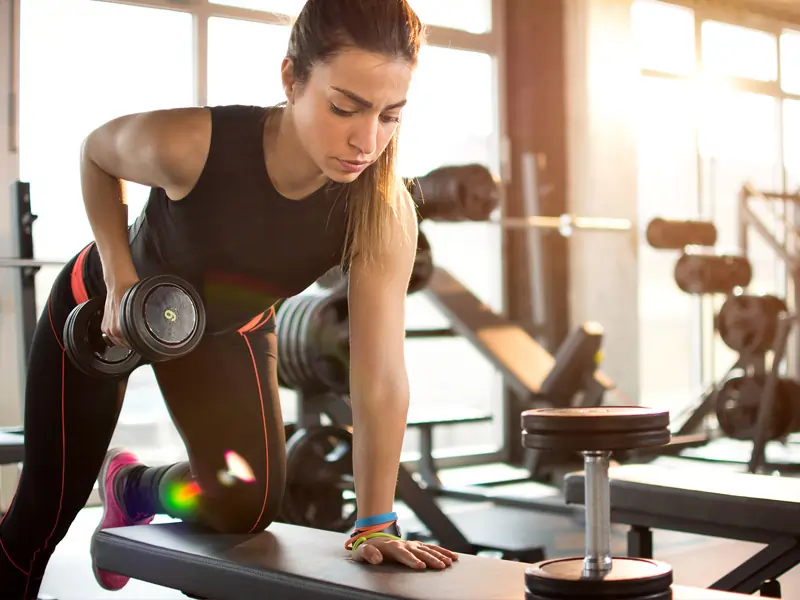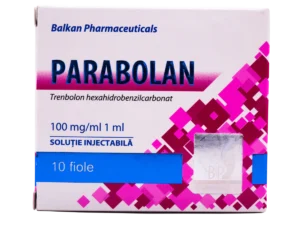Aerobic exercise helps strengthen your heart and lose fat!
This was thought until some times. However, systematic research has not been conducted. This conclusion is rather made on the conclusion that under aerobic loads, energy consumption slightly increases. However, completely ignoring the fact that most of the daily intake is the basic metabolism, which slows down after exposure to aerobic exercise. This is due to the fact that the body needs resources to restore the lost. Moreover, the more we try to spend the energy stored in fat, the stronger the body tries to compensate for the spent, storing it for the future and slowing down the metabolism.
We get a vicious circle. In order to minimize the negative consequences of aerobic exercise, you will have to limit daily calorie intake, and with a decrease in daily calorie intake, the body begins to save energy even more.
Strengthening the heart is also a dubious statement, because numerous deaths of marathon runners due to heart failure are known. Whereas, it would seem, it should be the other way around. Thus, aerobic exercises should be applied carefully and deliberately, taking into account the negative consequences of their use.
Today, the word “aerobics” is familiar and understandable, but meanwhile, the term first appeared only in the late 60s with the filing of Dr. Kenneth Cooper (USA) and firmly entered our vocabulary only in the late 70s.
If we talk about bodybuilders, then they resisted to include aerobic loads in their training programs longer than others. The great champions Arnold Schwarzenegger and Sergio Oliva, not to mention the lower stars, trying to get a relief, relied only on diet and increased intensity of strength training. However, when the “super-relief” came into fashion in the late 70s, bodybuilders were forced to reconsider their attitude and include aerobic loads in their programs.
And today, almost all participants in sports competitions, as well as many ordinary people who care about their health, work on exercise bikes and treadmills. True, many athletes do aerobic work thoughtlessly, without really realizing how aerobics affects their body and how to correctly combine aerobic exercise with strength training. And so this aerobics manual was born. I’m sure that it will interest not only bodybuilders, but generally all those who are concerned about their health and physical fitness.
What is aerobic exercise?
In the literal sense, “aerobic” means “with oxygen”. A simplified definition of aerobics is as follows: this is the exercise of low or medium intensity, contributing to the strengthening of the cardiovascular system. In a broader sense, aerobics is the best way to burn calories. That is, aerobic training helps to burn fat and at the same time maintains muscle mass (if not performed in too large volumes).
Speaking in a more specific language, aerobic activity is characterized by an increase in heart rate to 85% of the maximum. Heart rate above 85% of maximum value is suitable only for anaerobic training. The easiest way to determine your maximum heart rate is to subtract your age from 220. A more refined formula for calculating the maximum heart rate (MHR) is
HRmax = 205.8 – (0.685 * age)
For example, the maximum heart rate for a person aged 30 will be 190 beats per minute (220 – 30 = 190), and according to the updated formula, 185 beats per minute. Therefore, when doing aerobics, the pulse of such a person should be from 123 to 161 beats per minute (from 65% to 85% of the maximum heart rate).
When you gain some experience doing aerobic exercise, you won’t need to take your wrist every time and measure your heart rate, because you will already know how your body feels when you reach that frequency, and you’ll just try to get those feelings. In general, note the following for yourself: if, while doing aerobics, you are not able to speak without swallowing additional air, then you are training too hard, but if you do not notice any changes in the speed of your breathing, then you are working with insufficient intensity.
What are aerobic loads for?
Aerobic exercise helps lower blood pressure, reduces the risk of heart failure, improves lung function and helps to overcome stressful conditions in the body.
The main reason that bodybuilders perform aerobic exercise is the burning of fat. Many elite athletes perform a limited number of aerobic exercises (an hour or two a week) all year round in order to control the level of subcutaneous fat. Before the competition, the load sometimes increases to six workouts of two hours each. And all with one goal – to burn as much fat as possible.
How to choose your level of intensity?
High-intensity aerobic training loads muscles and the heart. These types of activities include cycling, swimming, kickboxing and sprinting. For bodybuilders, these types of activities are not very suitable if only because they already load their muscles in the gym. If you still devote more time to such aerobics, then, firstly, you will have little strength left to work with weights, and secondly, there is a high risk of injury.
Instead, you should prefer low-intensity aerobics. Keeping a constant pace, you can maintain the heart rate at the required level, burn fat, strengthen the cardiovascular system and avoid unnecessary damage!
What is the best type of aerobics?
It all depends on your preferences. Let’s say many people prefer to exercise on a stationary bike, stepper or treadmill. This cardio-machinery, which available in almost any fitness center, allow you to set the aerobic load of low and medium levels, which is preferable for bodybuilders. In addition, they allow you to change the angle of application of the load. Try to avoid aerobic exercise, in which the main burden falls on the hands and arms. They consume far fewer calories than during work, where the legs are mainly loaded, plus the cardiovascular system is involved in the work to a much lesser extent.
If we talk about the three types of aerobic exercise machines indicated above, then working on a bicycle ergometer least loads the knees and ankles and has the most direct effect on quadriceps. The lowest level of exercise intensity can be maintained while walking at a moderate pace on the treadmill. This type of aerobic exercise has the least effect on the overall workload of your muscles.
Well, the most intensive work is done on the stepper. Regardless of whether you work on the stepper or run up the stairs, a woman weighing 54 kg spends an average of 40 calories per 100 steps, and a man weighing 80 kg burns 45 calories while doing the same job. A significant part of the load when working on the stepper falls on the gluteal muscles. In general, each type of load affects the body in different ways, which is why bodybuilding champions, preparing for competitions, perform various kinds of aerobic loads, manipulating the duration of the classes, as well as the intensity of the training.
How much aerobics do you need?
If you are a beginner or just haven’t done aerobic work for several months, your first cardio workout should not last longer than 15 minutes. When you reach a certain degree of endurance, you can gradually increase the duration of aerobic exercise to 20-60 minutes, depending on the goals that you set for yourself, and the frequency of aerobic training.
As a rule, aerobic training begins to gain a fat-burning effect when the duration of classes is at least 20 minutes. Therefore, shorter aerobic workouts are preferable for maintaining a stable weight, and longer ones for burning fat.
Whenever you decide to get aerobics and increase the duration of aerobic exercise, do it smoothly and gradually. Let’s say this week the duration of your aerobic training is 30 minutes, then next week it can be increased to 35 minutes, and after another week – up to 40.

How often should you do aerobics and how long should your workouts be? It depends on your goals, the overall intensity of the load and the training scheme as a whole. In order to maintain the percentage of fat at some stable level or slightly lower it, 60-90 minutes of aerobic exercise per week is enough. You can distribute all this time between 2-3 workouts depending on your level of endurance, as well as how your body reacts to the performed aerobic exercises.
To burn fat at maximum speed, as bodybuilders do, preparing for competitions, you will need from 2 to 5 hours of aerobics per week. Thus, the duration of each aerobics work out will be from 40 to 60 minutes. In the last weeks before the competition, some athletes perform two 40-minute or even two 60-minute aerobic workouts every day.
Remember: no matter how much time you spend on aerobics, these exercises should not be carried out to the detriment of basic strength training. If you lose weight and muscle volume too quickly, reduce aerobics. The appearance and physique of marathon runners should lead you to the idea that only aerobics will not give you the opportunity to achieve a champion figure.
At the same time, it is quite difficult to achieve a really good muscle mass relief due to strength training. Take a look at the photos of the champions who won in the years 50-70, and you will understand everything. And if the fat burning is too slowly, gradually increase the duration of aerobic training, while tightening the diet.
Do you need a warm up and a cool-down?
Starting an aerobic workout at a very fast pace means exposing unnecessary and dangerous stress to your muscles and heart. Therefore, get involved in the work gradually. Before you start walking, do a stretch, before you go jogging, go a step, before jogging at full strength, go jogging. A five-minute warm-up before starting aerobics is essential for both the muscles and the heart.
Slowly increase the pace of work until you reach the required heart rate. At the end of an aerobic workout, also slowly slow down. 3-5 minutes smooth cool-down will favorably reduce the heart rate to a normal level.
What time to do aerobics?
If your goal is to burn fat, then the best time for aerobic exercise is the morning before breakfast. When you wake up, but have not yet had time to eat, the reserves of glycogen in your body are depleted, so the body will turn to fats for energy. However, many do aerobics on an empty stomach in the morning is uncomfortable or simply unacceptable for one reason or another, therefore aerobic training is often carried out day or evening as the final part of strength training (usually it is training for small muscle groups such as the arms or abdominals). It’s a good idea to do aerobics in the evening before going to bed.
It is believed that it is better to refrain from aerobic exercise on those days when you are training leg muscles. Continued endurance work, complemented by heavy squats or leg presses, can easily lead to overtraining. If you are still required to do aerobics these days, reduce the duration of your workouts. Allow your hips to recover properly!
Security measures
As mentioned above, high-intensity aerobics like fast running is unacceptable for bodybuilders. In addition, be careful not to run on a hard surface – this can lead to injuries to the knees and ankle. The main problem of aerobic training with low intensity is overheating of the body and excessive load on the cardiovascular system. Make sure you consume enough water and electrolytes before and during aerobic training, and that you are not wearing too warm clothes.
Conclusion
Aerobics must be present in most bodybuilding training programs. Aerobic training is equally good both for improving well-being, and for burning fat. Try to learn how to best incorporate aerobic exercise into your training program, taking into account your type of build, goals, and overall training pattern.
Note
| Types of aerobic load | Woman weighing 54 kg | Man weighing 80 kg |
| Hiking with a backpack of 18 kg | 289 | 391 |
| Basketball game | 255 | 345 |
| Bicycle riding (23.4 km/h) | 540 | 840 |
| Dancing | 357 | 483 |
| Handball game | 510 | 690 |
| Jogging (9 km/h) | 552 | 748 |
| Running (18 km/h) | 765 | 1035 |
| Swimming (45 m/min) | 530 | 768 |
| Walking (3.6 km/h) | 180 | 288 |
| Fast walking (8 km/h) | 330 | 540 |
This table shows how many calories you are able to burn, doing this or that type of aerobics for an hour. Make corrections to these figures adjusted for your weight: the deviation is 2 percent in one direction or another for every 2.25 kg of weight (for example, walking with an 18 kg backpack behind your shoulders, a man weighing 104.5 kg will burn by 20% more calories than a man weighing 80 kg, or rather, 468 calories).







